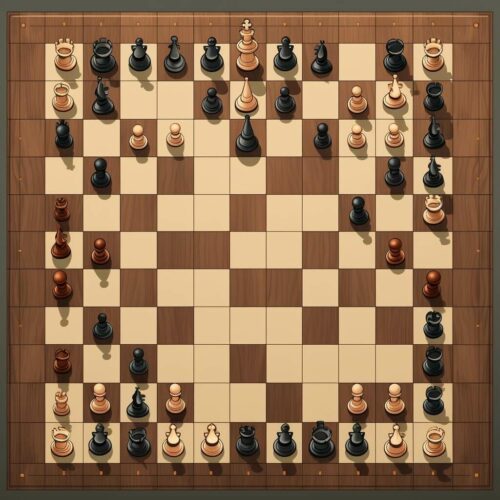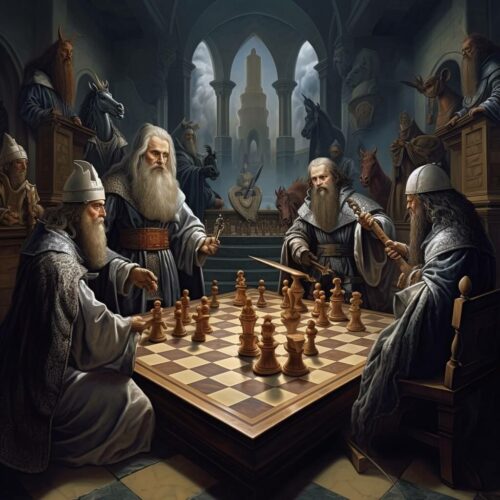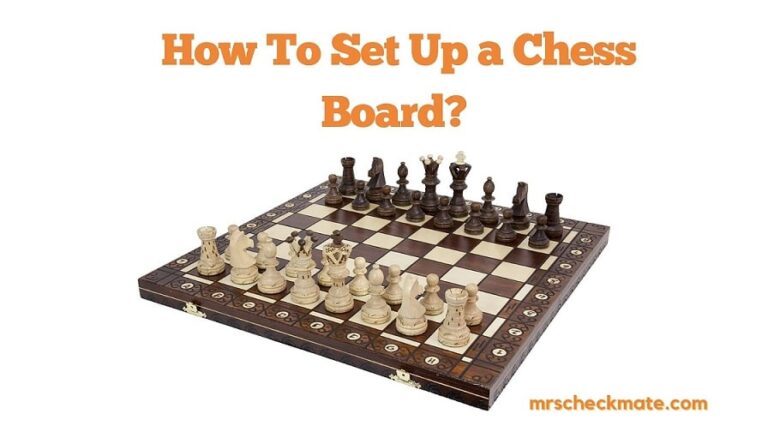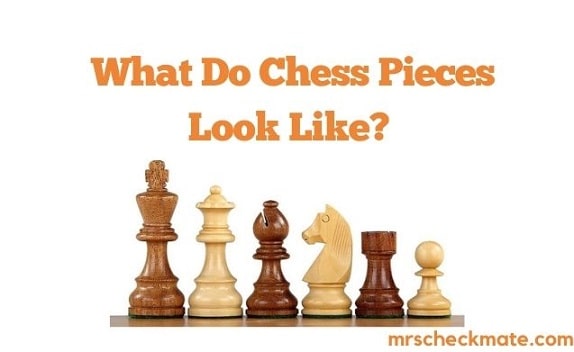The En passant Capture: Unraveling Chess’s Tactical Enigma
In the grand tapestry of chess, where kings, queens, and knights dance in a strategic ballet, there lies a move as mysterious as it is masterful: the “En passant” capture. A French term translating to “in passing,” this move is a testament to the game’s depth and intricacy. But what makes it so special? Let’s embark on a journey to uncover the secrets of the en passant.
Historical Background
The Evolution of the Pawn and the Birth of En passant
The game of chess, with its origins tracing back over a millennium, has witnessed numerous transformations. One of the most pivotal changes in the game’s history revolves around the humble pawn. Initially, the pawn’s movement was restricted to a single square advance. However, as the game evolved and strategies became more intricate, the need for a faster-paced opening phase became evident. Thus, the pawn was granted the ability to move two squares on its initial move.
This newfound freedom, however, brought with it a tactical challenge. Opposing pawns could now bypass each other, evading potential capture. The chess community, recognizing this loophole, introduced the en passant rule as a countermeasure. This rule ensured that a pawn’s two-square advance did not go unchecked, preserving the game’s balance.
Timeline of the Pawn’s Evolution:
- Ancient Chess (6th Century): Pawns move one square.
- Late Medieval Period (15th Century): Introduction of the two-square initial move.
- Renaissance Era: Formalization of the en passant rule.
🔗 To further understand the game’s evolution and its rules, our guide on basic chess rules offers a comprehensive overview.

Rules and Conditions
Deciphering the En passant Capture
The en passant rule, while elegant in its simplicity, is governed by specific conditions. Understanding these conditions is crucial for both executing and defending against this tactical move.
Key Conditions for En passant:
| Condition | Explanation |
|---|---|
| Enemy’s Move | The opposing pawn must have just made a two-square advance from its starting position. |
| Your Position | Your pawn should be on its fifth rank (for white) or fourth rank (for black). |
| Capture Timing | The capture is only valid on the move immediately following the two-square advance. |
In essence, the en passant capture is a tactical response to an opponent’s pawn trying to evade confrontation. However, the window of opportunity is brief. If not seized immediately, the chance vanishes.
Visualizing En passant:
Imagine a scenario where a white pawn stands on e5 and a black pawn on d7. If the black pawn advances to d5, the white pawn can capture it en passant, moving to d6 and removing the black pawn from the board.
In the realm of chess, understanding the nuances of each move is crucial for strategic gameplay. Just as the en passant rule offers a unique pawn-capturing technique, another special move, known as chess castling, provides players with a distinctive method to safeguard their king and connect the rooks. Both these moves, while seemingly simple, can have profound implications on the game’s outcome.
Mastering such advanced maneuvers, from the swift en passant capture to the defensive prowess of castling, can significantly elevate a player’s game, offering them a broader arsenal of tactics to deploy on the chessboard.
Notation
Recording the Enigmatic En passant
In the world of chess, every move, every strategy, and every tactic has its unique notation. The en passant capture, with its distinct nature, is no exception. Notation serves as a written record of the game, allowing players to revisit, analyze, and learn from their matches.
Decoding En passant Notation:
- Standard Notation: The capturing pawn’s destination square is used. For instance, if a white pawn on e5 captures a black pawn that has moved to d5, the notation is exd6.
- Explicit Notation: To specify the en passant nature of the capture, “e.p.” is appended. Using the previous example, it would be notated as exd6 e.p.
🔗 For those new to chess notation, our guide on using the analog clock in chess offers insights into recording moves and the importance of time management.

Strategic Importance
The Tactical Brilliance of En passant
At first glance, the en passant capture might seem like a mere exception to the standard rules. However, its strategic depth is profound.
Key Strategic Implications:
- Disrupting Pawn Structure: Executing an en passant can break an opponent’s pawn chain, potentially weakening their position.
- Preventing Pawn Promotion: A timely en passant can halt an advancing pawn, thwarting its potential to promote to a more powerful piece.
- Creating Open Files: By capturing en passant, you can open files for your rooks, enhancing their mobility and influence on the board.
Visualizing Strategy:
Consider a scenario where your opponent has a pawn chain from d5 to f5, and you have a pawn on e5. If their g7 pawn advances to g5, capturing it en passant not only breaks their chain but also opens the f-file for your rook’s dominance.
🔗 Pawns might seem simple, but their strategic depth is vast. Dive deeper with our articles on pawn strategy and advanced pawn tactics.
En passant in Famous Games
When Grandmasters Use the Stealth Move
The en passant capture, while not as frequent as other moves, has made its mark in several historic games, showcasing its strategic importance at the highest levels of chess.
Key Moments in Chess History:
- Capablanca vs. Tartakower, 1924: In a game that showcased the genius of Capablanca, the en passant capture played a pivotal role in gaining a positional advantage, eventually leading to a win for the Cuban grandmaster.
- Kasparov vs. Anand, 1995: In their World Championship match, Kasparov utilized the en passant to disrupt Anand’s pawn structure, showcasing the move’s potential to change the course of a game.
🔗 For those keen on exploring more historic games and understanding the broader strategies employed by grandmasters, our article on advantage in chess is a treasure trove of insights.

Teaching En passant to Beginners
Introducing the Subtle Art of En passant
Teaching the en passant rule to beginners can be challenging due to its unique nature. However, with the right approach, it can be both fun and enlightening.
Steps to Teach En passant:
- Set the Context: Start by explaining the historical evolution of the pawn’s movement and the introduction of the two-square advance.
- Highlight the Problem: Showcase scenarios where the two-square move can be exploited to bypass threats, setting the stage for the need for en passant.
- Demonstrate the Move: Use a chessboard to demonstrate the en passant capture in various situations. Emphasize the conditions that must be met for the move to be valid.
- Engage with Practice Games: Allow beginners to play practice games focusing on pawn movements. Encourage them to spot opportunities for en passant and to defend against it.
- Reinforce with Real Games: Share famous games where en passant was used, highlighting its strategic importance.
🔗 For beginners, understanding en passant is just one step in the chess learning journey. Our comprehensive chess tips for beginners offer a holistic approach to mastering the game.
The Psychology Behind En Passant
Mind Games on the 64 Squares
Chess is as much a mental game as it is a strategic one. The en passant capture, with its elusive nature, plays a significant role in the psychological warfare on the board.
Key Psychological Aspects:
- Surprise Element: Many players, especially at the intermediate level, often forget or overlook the en passant rule. Springing it on an unsuspecting opponent can tilt the game in your favor.
- Forcing Mistakes: Threatening an en passant capture can force your opponent into making suboptimal moves, giving you a positional advantage.
- Intimidation: Just the knowledge that you’re aware of such advanced tactics can be intimidating for some opponents, leading them to play more defensively.

🔗 To delve deeper into the psychological aspects of chess and understand how grandmasters think, our article on advantage in chess offers invaluable insights.
Common Mistakes and How to Avoid Them
Navigating the En passant Minefield
While the en passant capture offers strategic advantages, it also comes with pitfalls that players must be wary of.
Typical Mistakes:
- Over-reliance: Using en passant too frequently, even when not strategically beneficial.
- Missing Opportunities: Failing to capitalize on en passant opportunities, especially when it can offer a significant advantage.
- Misunderstanding the Rule: Attempting en passant captures in invalid scenarios, leading to illegal moves.
Tips to Avoid Mistakes:
- Regular Practice: Engage in focused practice sessions where you specifically work on en passant scenarios.
- Analyze Games: Review games where en passant played a crucial role, understanding the strategic implications.
- Seek Feedback: Play with seasoned players and seek feedback on your use of en passant.
🔗 Our comprehensive guide on chess tips for beginners offers more insights into avoiding common mistakes and improving your game.

En passant in Modern Chess Software
Digital Chess and the En passant Phenomenon
With the rise of digital chess platforms and software, understanding how they handle en passant is crucial for online players.
Key Insights:
- Automatic Recognition: Most modern chess software automatically recognizes en passant opportunities and allows players to execute them.
- Training Modules: Many platforms offer dedicated training modules focused on en passant, helping players master the move.
- Analysis Tools: Post-game analysis tools highlight missed en passant opportunities, aiding in learning.
🔗 For those keen on integrating technology into their chess training, our article on how to set up a chess board offers insights into both physical and digital setups.
Conclusion
The enigmatic en passant capture, a move deeply rooted in the annals of chess history, exemplifies the game’s intricate beauty and complexity. This unique maneuver, while seemingly simple, offers a window into the profound strategic depth that has kept enthusiasts engrossed for generations.
As we navigate the vast landscape of chess, from understanding the basic rules to mastering advanced tactics like those discussed in our pawn strategy guide, it’s moves like en passant that continually challenge and inspire us. Whether you’re setting up your chess board for the first time or revisiting the roles of the chess pieces, let the spirit of continuous learning guide you. Chess, with its endless possibilities and nuances, beckons players of all levels to delve deeper, play smarter, and cherish every move. As we journey through this timeless game, let’s embrace its lessons, celebrate its challenges, and always strive for that perfect checkmate.
FAQ
Frequently Asked Questions (FAQs) about the En passant Capture in Chess
- What is the en passant capture in chess?
- The en passant capture is a special pawn capture that occurs when a pawn moves two squares forward from its starting position and lands beside an opponent’s pawn. On the very next move, the opponent has the option to capture the pawn as if it had only moved one square forward.
- Why was the en passant rule introduced?
- The en passant rule was introduced to maintain the balance of the game when the rule allowing pawns to move two squares forward on their initial move was implemented. Without en passant, pawns could bypass threats from opposing pawns, which would disrupt the game’s strategic depth.
- How is the en passant capture notated in chess records?
- In standard notation, the capturing pawn’s destination square is used. For instance, if a white pawn on e5 captures a black pawn that has moved to d5, the notation is exd6. To specify the en passant nature of the capture, “e.p.” can be appended, making it exd6 e.p.
- Can the en passant capture be deferred for a later move?
- No, the en passant capture must be made immediately after the opponent’s pawn makes the two-square advance. If not executed on the very next move, the opportunity is lost.
- Is the en passant rule commonly used in professional chess matches?
- While not as frequent as other moves, the en passant capture has been employed in several historic and professional games. Its strategic importance can offer significant advantages, making it a valuable tool in a player’s chess arsenal.






